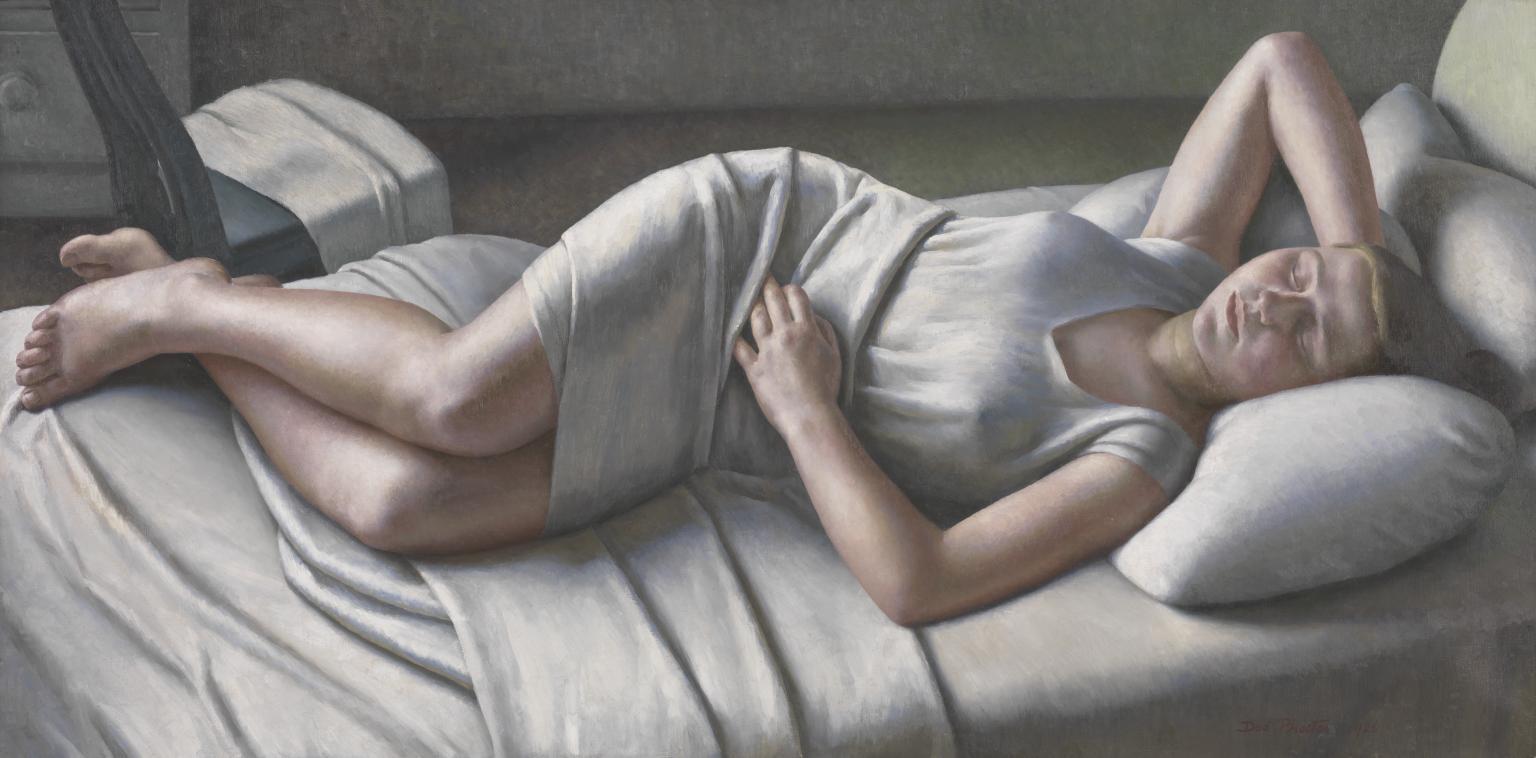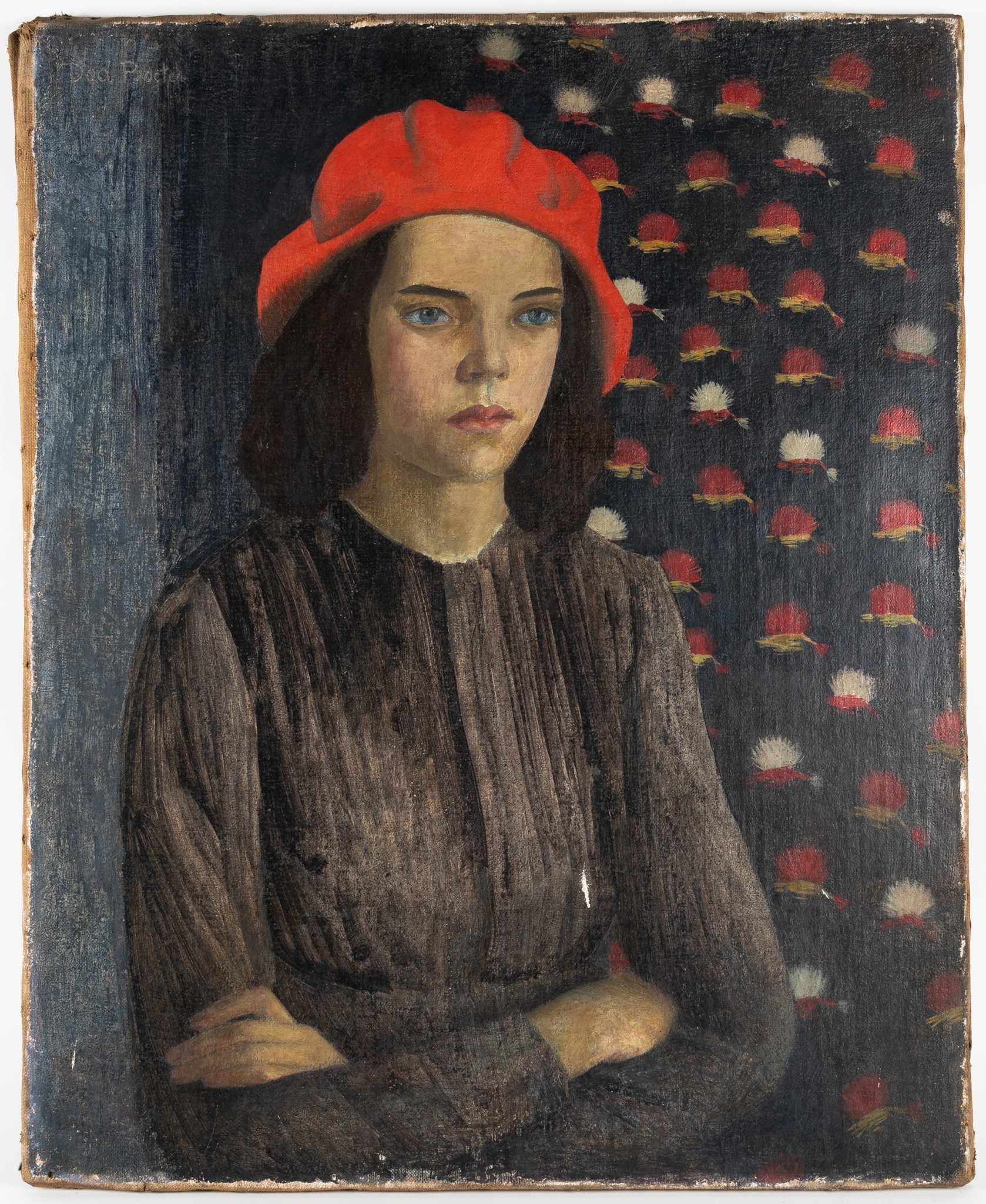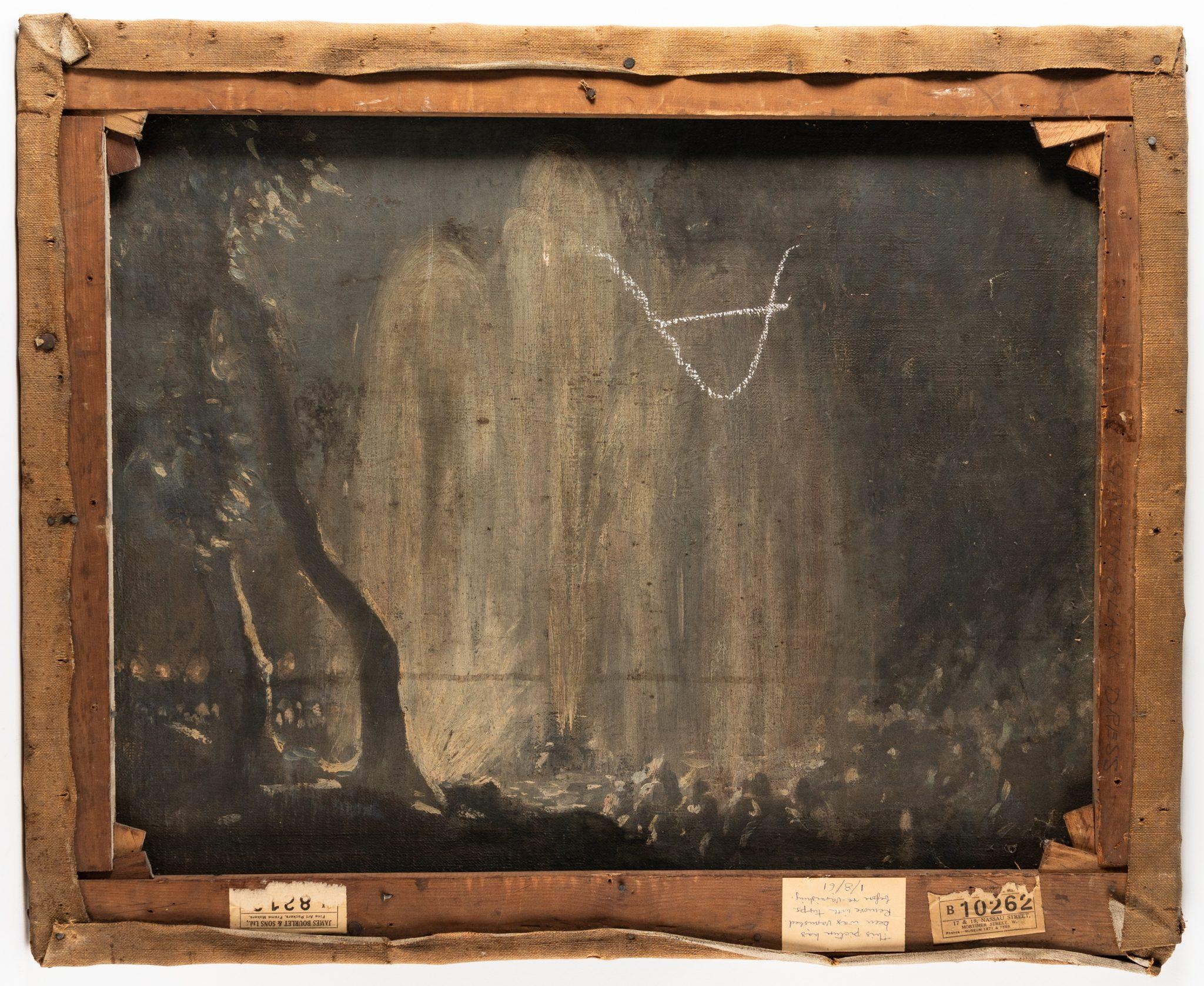Dod Procter | A Discovery
A solitary seated female figure gazes out past the viewer. Dressed in a medieval-esque black smock with a bright lacquer-red cap which envelops her dark shoulder-length hair, the girl crosses her arms and sits motionless, her piercing blue eyes staring into the distance, her mind lost in thought and detached from the present. She sits in front of a decorative pattern of flower motifs which adorns a panel of wallpaper, tapestry or silk cloth, alongside a plain blue/grey wall. In the top left-hand corner, the maker’s signature reads ‘Dod Procter’.
This newly discovered work by Dod Procter (1890-1972), from a private collection, is truly remarkable as it appears to be the earliest figurative work by the artist to have appeared on the market in the last couple of decades. It provides a glimpse into Dod’s early years as an artist, exploring and developing a visual vocabulary which would then characterise her oeuvre from the 1920s. Only three other figurative works painted before 1920 by Dod, but which arguably post-date the present painting, are known to us in public collections: a portrait in oil from 1916 of her friend Sheelah Hynes (sister of the artist Gladys Hynes) at The Wolfsonian-Florida International University (Colour Magazine, June 1919), and two line drawings, one most certainly a preparatory sketch for the oil, at the Tate Archives (these are recto-verso on a sheet of paper and the second sketch, the figure wearing a hat, may be of Sheelah or Gladys). Another figurative work, The Charm, from this period was reproduced in Colour Magazine in December 1918.
The composition and subject are typical of Dod’s more mature figurative work from the 1920s, which led to her rise to fame in 1925 with The Model (exhibited at the RA in 1925) and subsequently Morning (exhibited at the RA in 1927 and immediately acquired for the nation by the Tate, where it is still held today), propelling her to stardom and international acclaim. These works often depict the figure positioned close-up at a three-quarter angle to the viewer and, viewed slightly from above or sometimes from below, offer a sense of monumentality and weightiness akin to sculpture. The sitter, as in the present work, if not asleep, gazes into the void, the minimalist space and the various props strategically placed beside her creating a possible accompanying narrative.
The presence of tempera in this work with its transparent quality, most notably in the bodice, is evidence of its early dating. We know from her letters to Ernest Procter, whom she married in 1912, that throughout the 1910s Dod was experimenting and practising with tempera, a medium which was experiencing a revival at the turn of the 20th Century, promoted by critics such as Roger Fry and artists such as Marianne Stokes, herself a member of the Newlyn School in the last decade of the 19th century. On occasion Dod would use tempera as a means of mapping out a colour scheme before working on the final piece in oil. It would appear from the present work that she also worked in mixed media, namely tempera and oil.
The bold lacquer-red pigment which Dod employed for the girl’s hat attests to the dating of this work and a similar colour was used for a still life entitled Poppies and Foxgloves (Modern British and Irish Art Day Sale, Christie’s, London, 21st March 2024, lot 145), which Dod described during its production in a letter to Ernest in 1917. The hat itself may be the one later worn by Dod’s model Lillian in Girl with a Red Cap (1923) (Paintings Sale, Woolley & Wallis, Salisbury, 21st March 2012, lot 249).
Dod exhibited nationally in group exhibitions with, but not solely, the Royal Academy, WIAC (Women’s International Art Club), Society of Women Artists, United Artists, Allied Artists and in gallery shows such as the Leicester Galleries and Brook Street Galleries. She also exhibited internationally with the British Artists’ Exhibition in Buenos Aires in 1928, the Venice Biennale from 1922 to 1930, the Canadian National Exhibition, the Carnegie International in Pittsburgh from 1924 to 1935, in a solo show at the Carl Fischer Gallery New York in 1936 and a solo show at the Carnegie in 1936-37, thereby gaining an international clientele.

Greatly supported by the British press, art journals and art critics, most notably Frank Rutter, the Francophile and proponent of Post-Impressionism, Dod was an important and highly recognised modernist painter and in 1942 became the second woman to be elected a Royal Academician (Laura Knight being the first). Her paintings are now held in important national and international institutions, such as the Tate and the Carnegie Museum of Art in Pittsburgh.
Trained in Newlyn under the auspices of Stephen and Elizabeth Forbes, who sought inspiration from the art colonies in Brittany, Dod was part of the second generation of painters from the Newlyn School and a key member of the Newlyn and Lamorna art colonies, her artistic and social network counting among others Laura Knight, Gluck, Gladys Hynes, Ernest Procter, Getrude and Harold Harvey, Cedric Morris and AJ Munnings.
We are grateful to Toby Procter who has confirmed the authenticity of this work and also to Alexandra Kett-Baumann for her assistance with the cataloguing of this work and for preparing this catalogue note.
Provenance
The present owner's grandparents; thence by descent;
Private collection, UK









